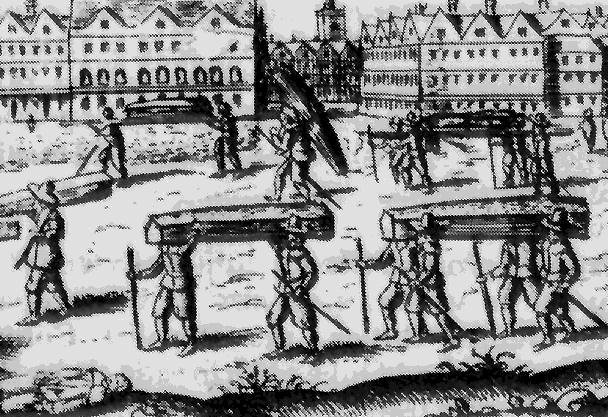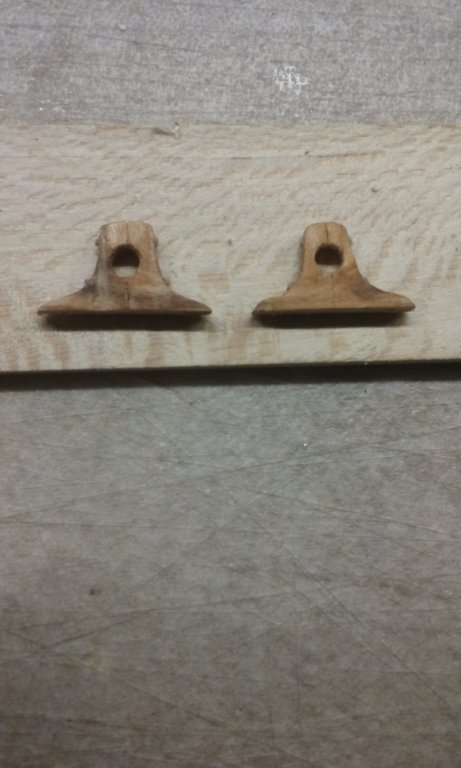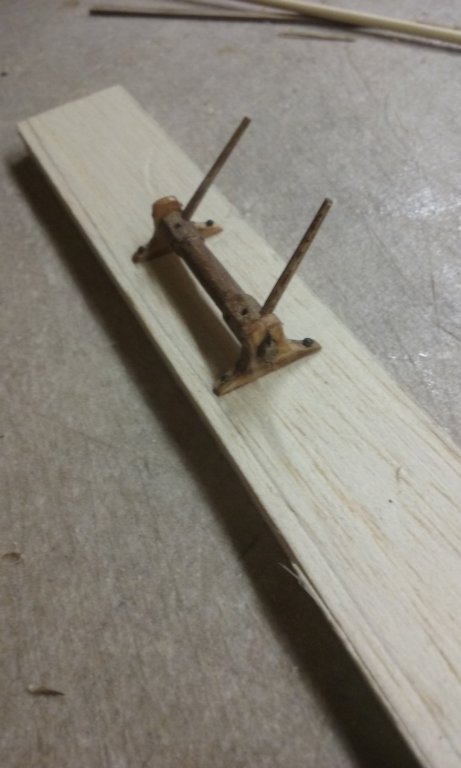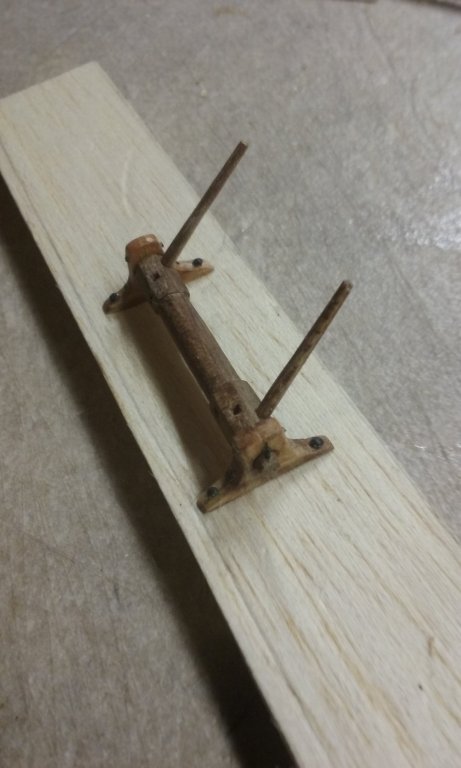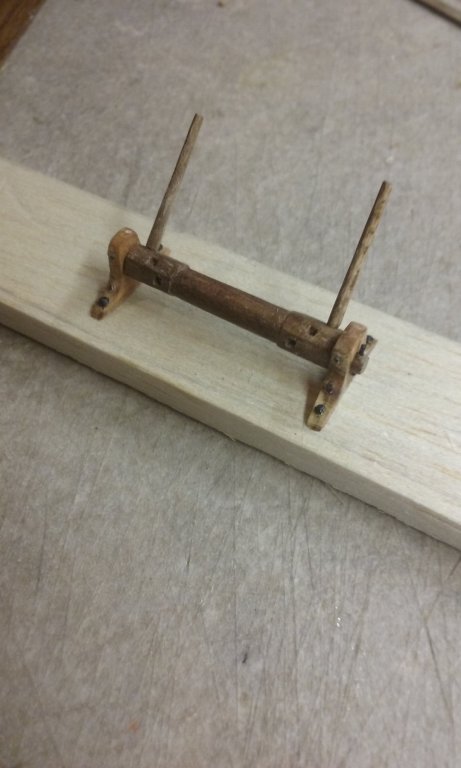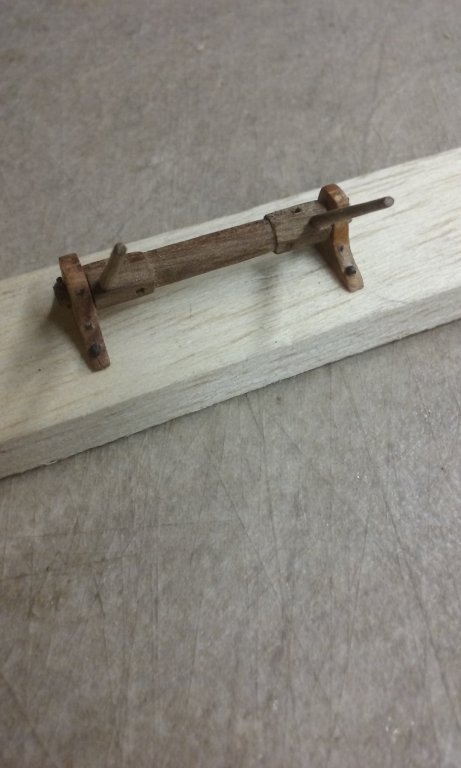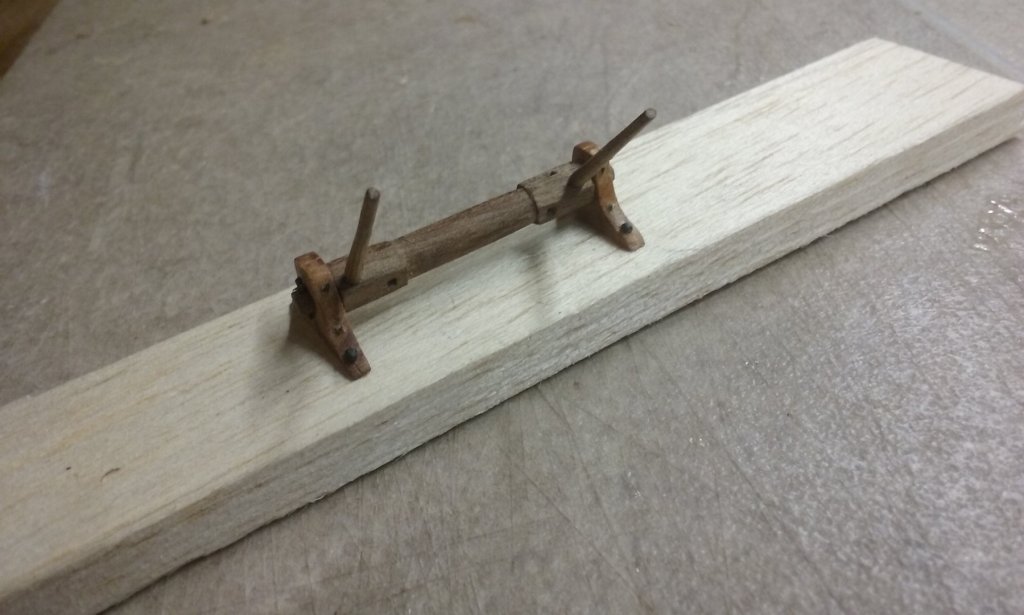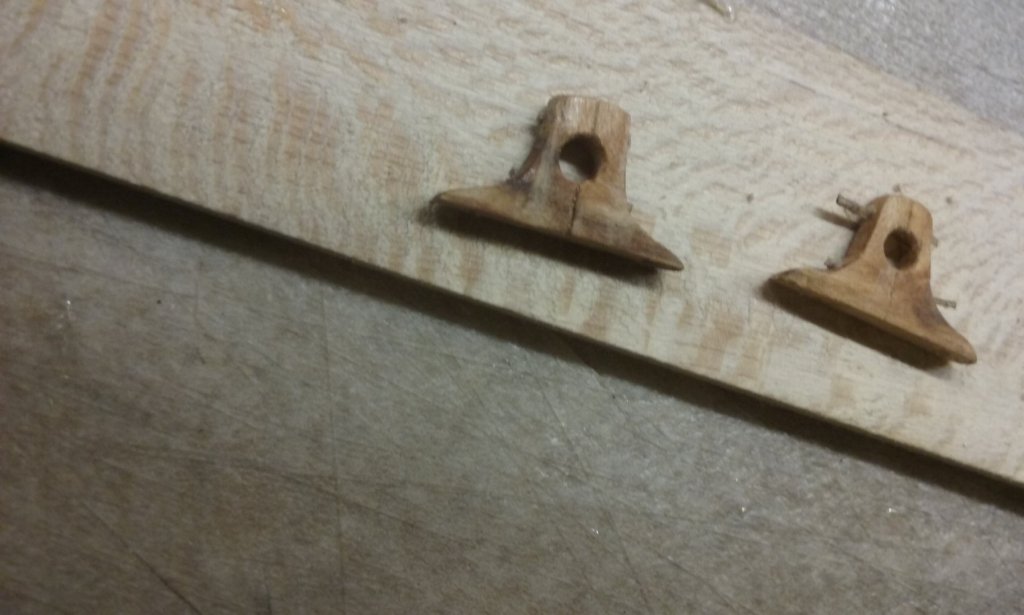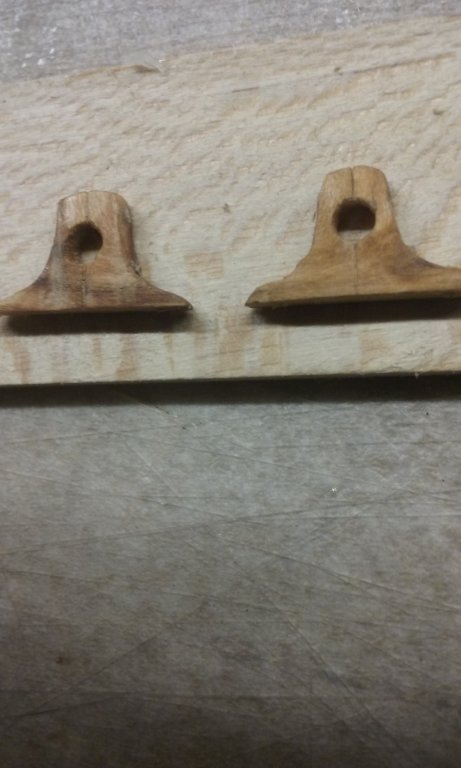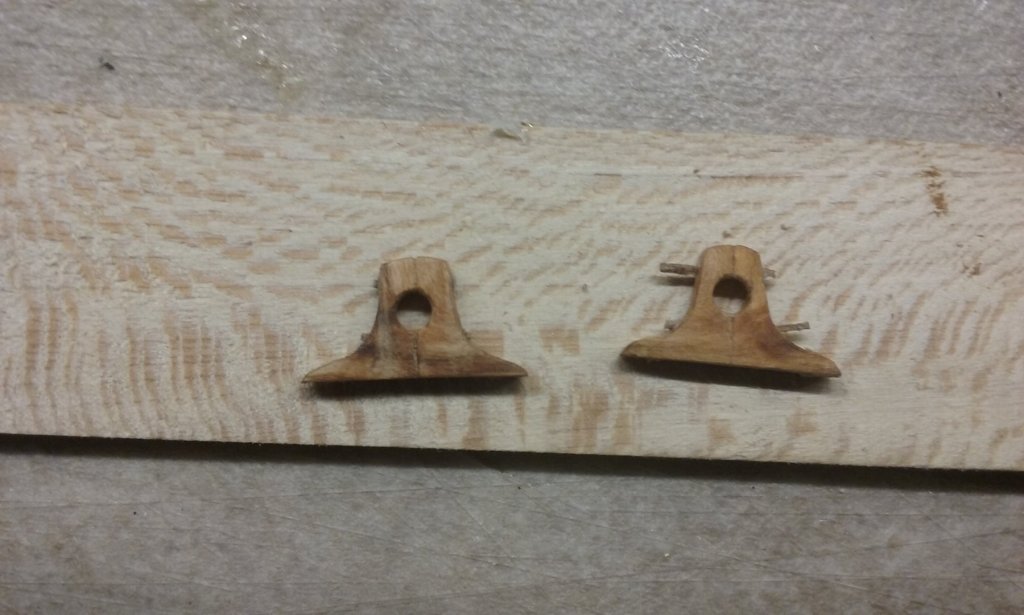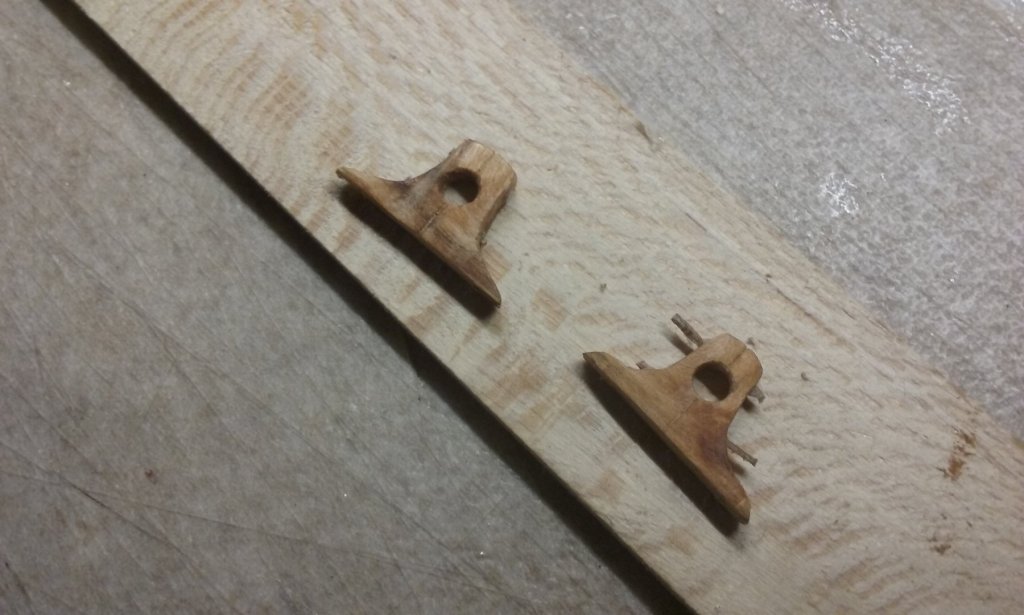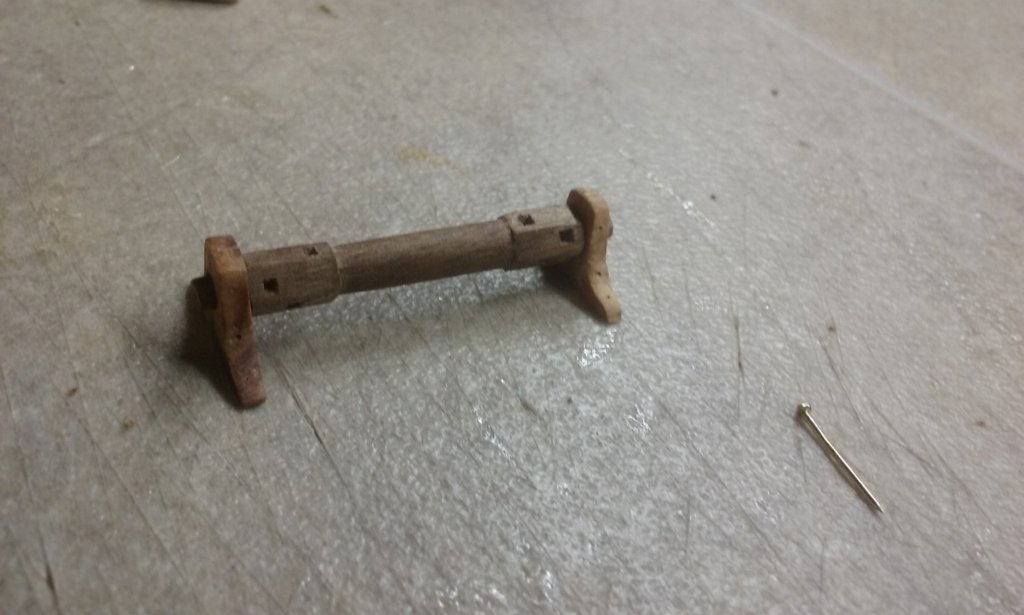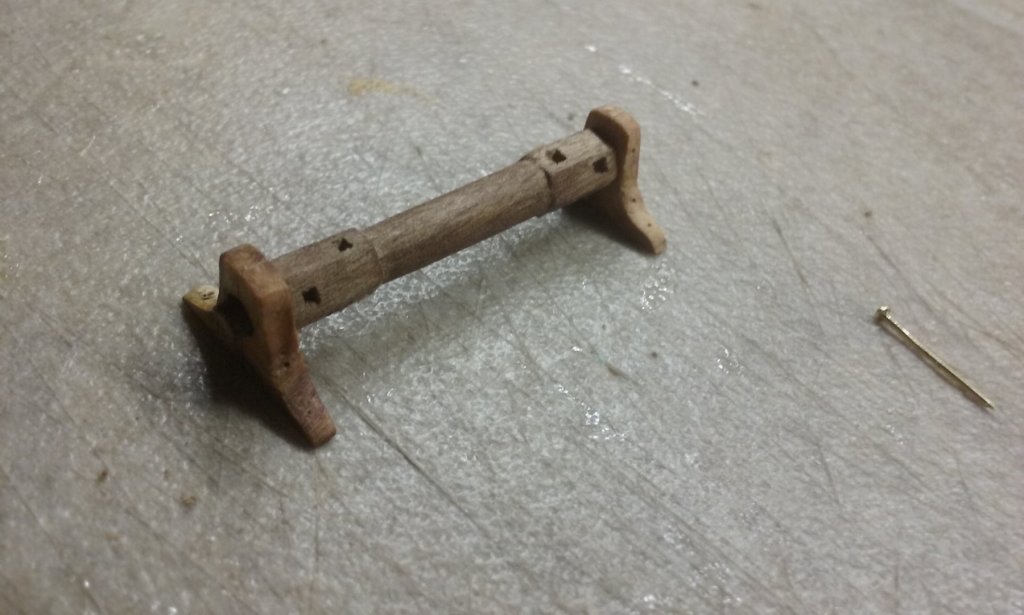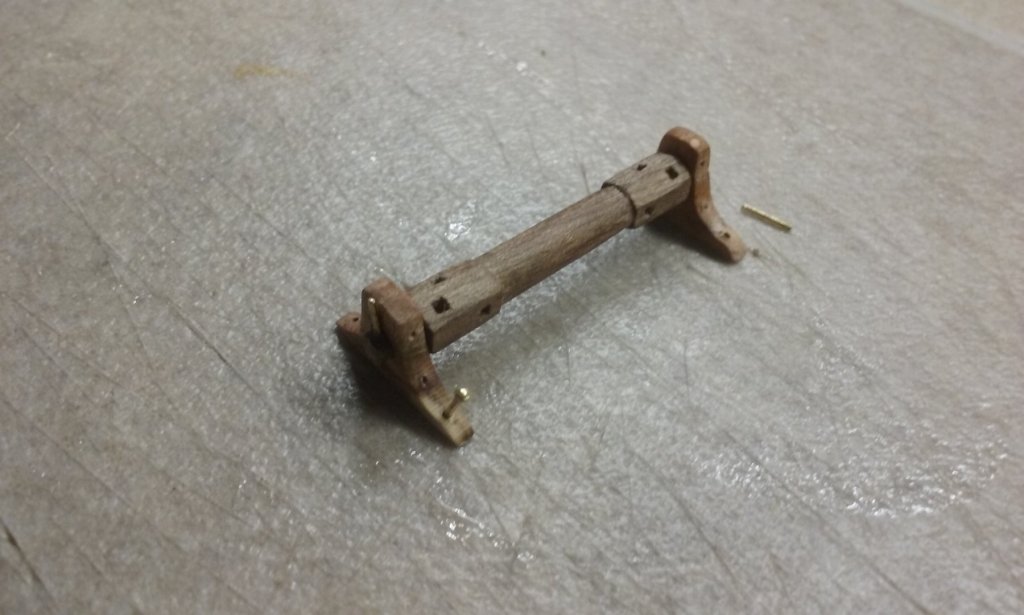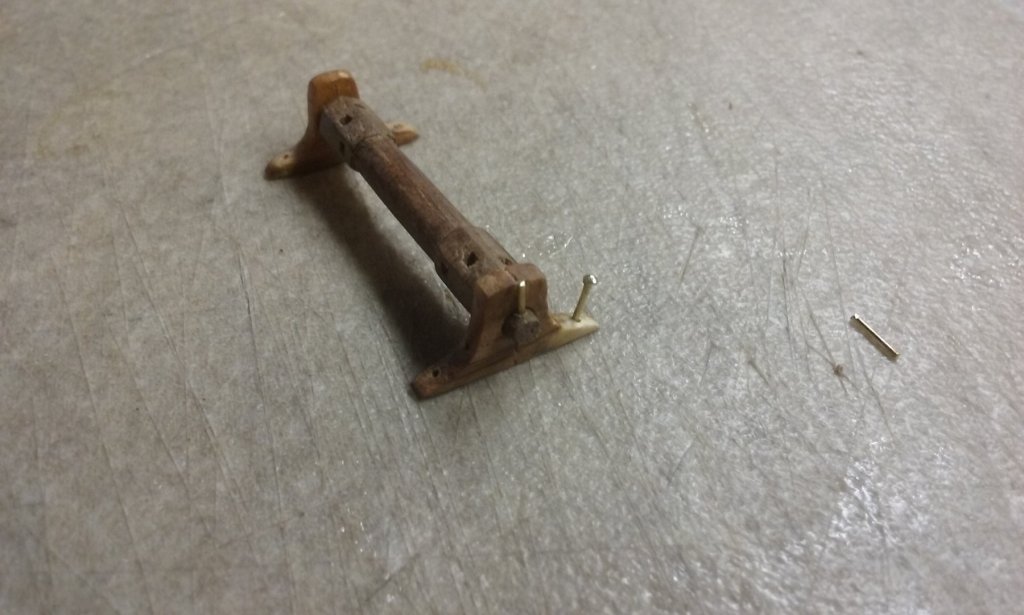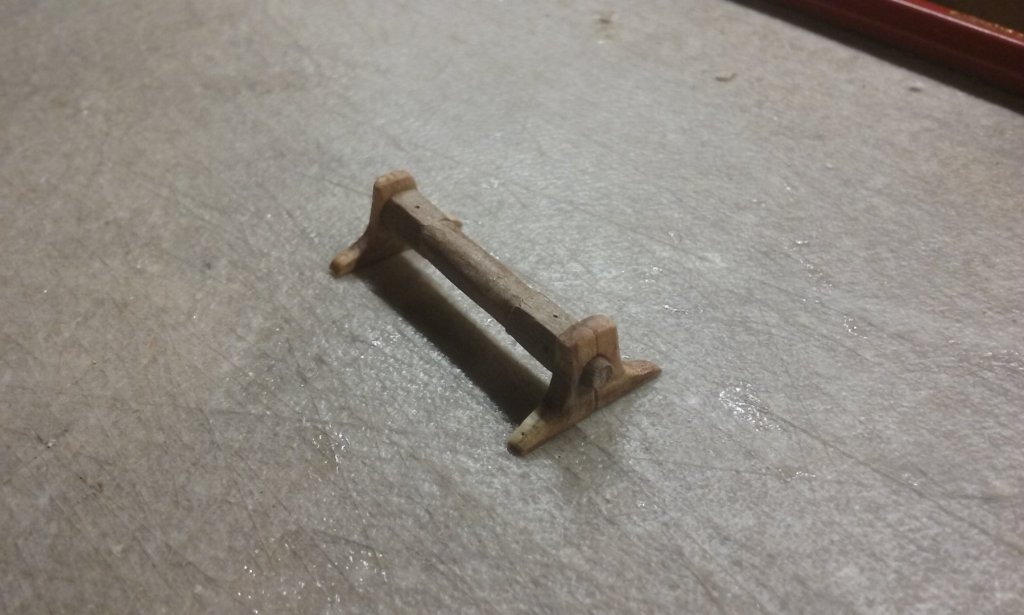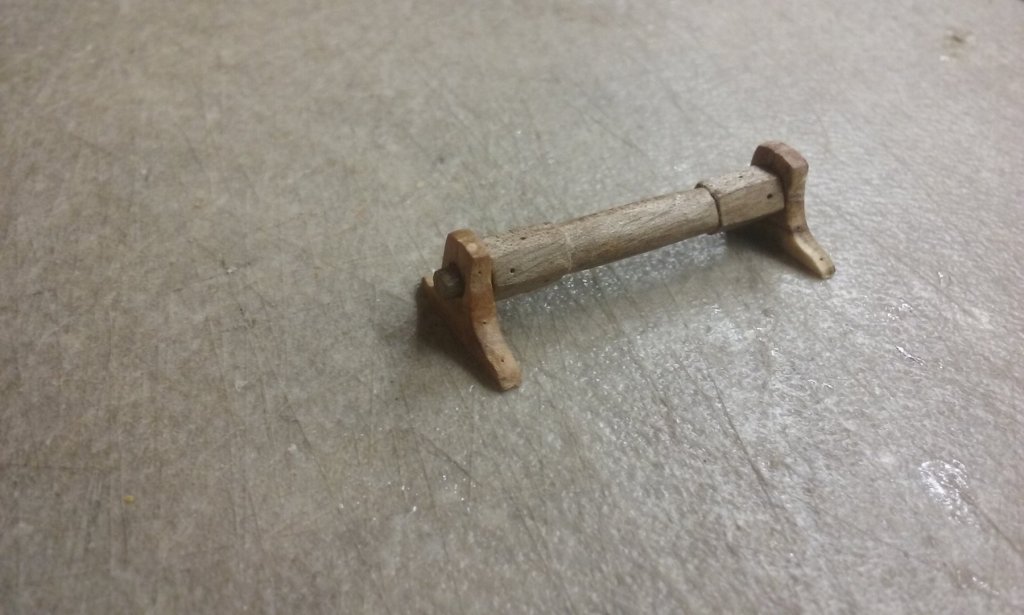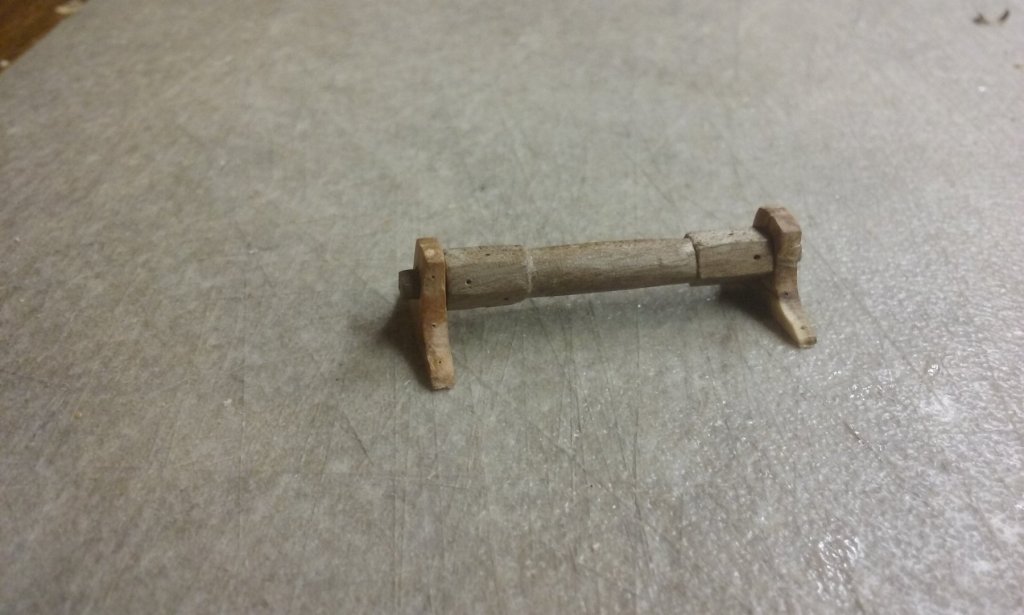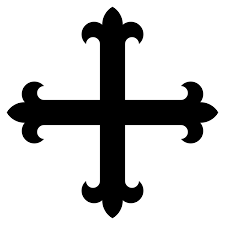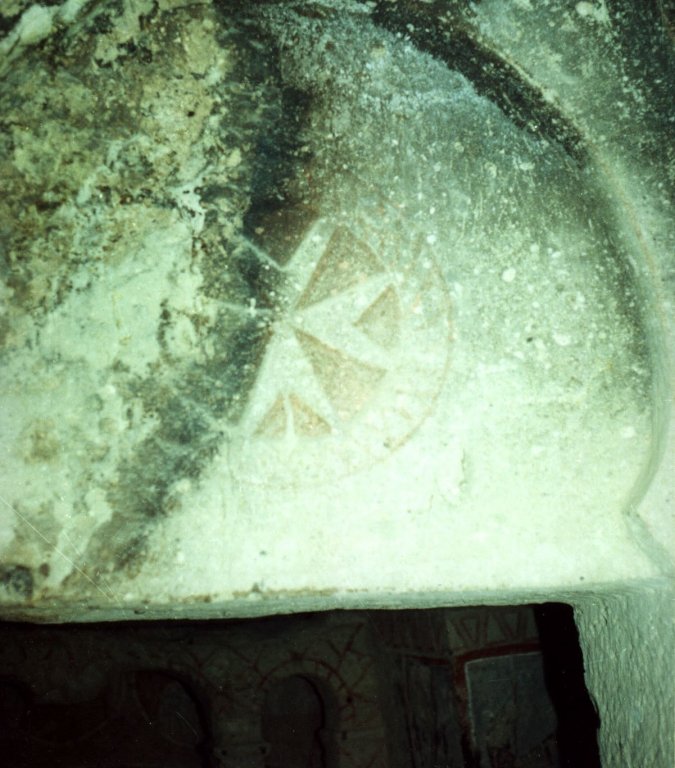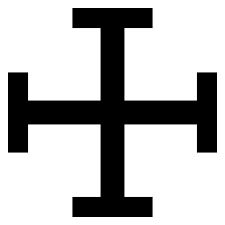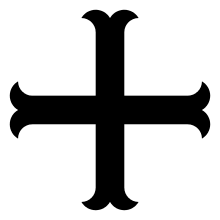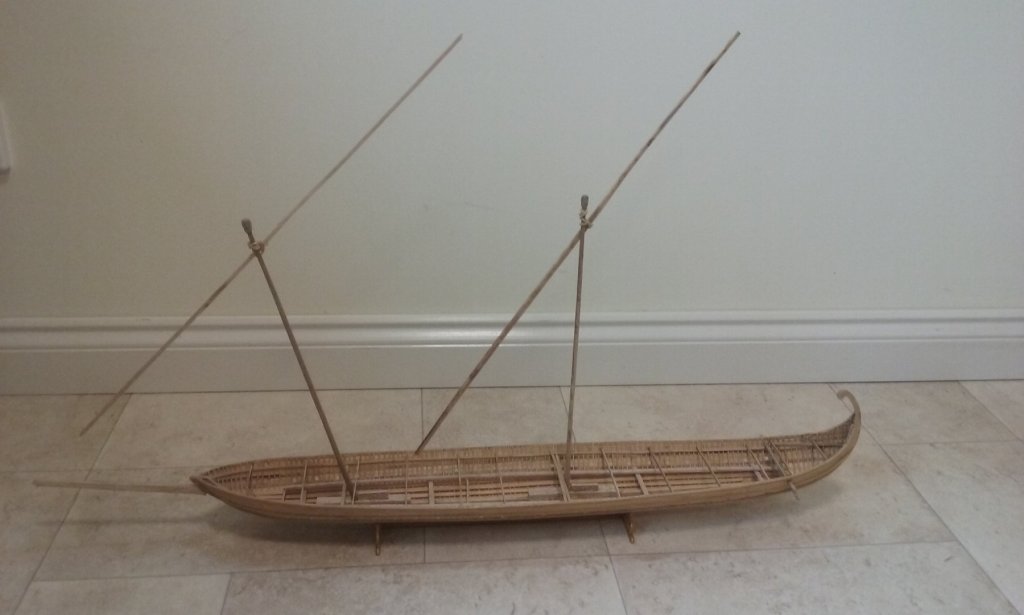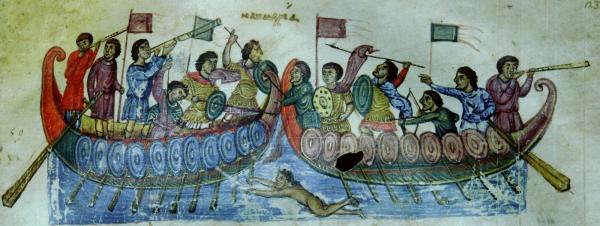-
Posts
7,989 -
Joined
-
Last visited
Content Type
Profiles
Forums
Gallery
Events
Everything posted by Louie da fly
-
Nikiphoros, what you've done so far looks good. The lack of plans is a bit of a problem - have you been in touch with AL to let them know they're missing? I should think they'll send them to you if that's the case (though I haven't any experience with them, I believe they're a reputable company and should be willing to help). I couldn't find the Web reference to the Caboteur nomme Sambouck that you mentioned. Do you have a link I could click on to find it? Just as a heads-up before you start making one, as far as I'm aware coffins at that time were shaped like this wider at one end than at the other, and with a lid like a "gabled roof". You may be able to re-arrange the contents of the boat so the mast won't have to be shifted, which is what I think they'd have done at the time. Otherwise the boat just won't be able to sail - the wind forces will be out of balance. Keep up the good work. Looking forward to further progress. Steven
-
Yes, not problem, and certainly not irretrievable. As I understand it, this is the first layer of planking, so after a bit of bog and sanding, you get a second go at it, and can make it better in light of your experience first time through. I stuffed up (in my own opinion) on my dromon planking and it didn't have a second layer so I was stuck with it. But in the long run it wasn't as bad as all that and I was able to accept it and move on, and determined to do better on the next build. Steven
-
Thanks for all the likes and the supportive comments. Here is the windlass; End pieces with fake bolts inserted. I made hem out of carved bits of wood: Then cut them off to just show the "bolt heads". The bolts to fix the windlass to the deck are made, painted and in place. Bars made and in place, and "bolt heads" painted black. All ready to put in place on the deck of the ship. As the windlass won't be in use, I'll be putting the bars in "storage" when the ship is on display. Steven
-
More progress on the windlass. I've cut the square holes for the bars, and drilled holes for the pins/bolts holding the windlass to the deck. These will be made from tiny brass pins I got years ago - can't remember where, and I've no idea where I'll be able to get replacements if I need them again). As I can't get drill bits bigger than 0.38mm (too small) or smaller than 0.8mm (too big), I used one of the little pins as a drill bit. It's got a sharp pyramidal head which acts quite to drill holes. I've used it to drill the holes for the fake bolts holding the frame together, plus the ones in the ends of the spindle for the pegs to keep it in place. The pegs will also be made from brass pins; I'd intended to use them for the fake bolts as well but it's all too fiddly and I've decided instead to use wood or bamboo painted to look like iron. Steven
-
That's a beautiful model, beautifully executed. Strange that the tower was so disliked by artists and architects when it was first built, as to our eyes it is a thing of beauty. But the writer Guy de Maupassant hated it so much he always ate lunch at the base of the tower, because it was the only place in Paris from which he couldn't see it. I've been up to the first level, but no higher (I chickened out). Steven
-
I don't know the answer to your question myself, but it would help others answer it if you specify the geographical area and time period (probably only to the nearest century) you wish to know about. There is certainly information available on the subject, but I'm not the one with the information to hand. Steven
-
I take my hat off to you, sir. That is some seriously beautiful work. Steven
- 589 replies
-
- le gros ventre
- cargo
-
(and 1 more)
Tagged with:
-
Actually, I think it's me that's derailing my own thread. Must get back to the build log. Here's current progress on the windlass. I think the central section of the "barrel" needs a bit of work to make the shape more consistent. It seems to be bulging outward a bit in the middle. Now I have to put in the square holes to take the bars and some way of fixing the windlass to the deck - probably pins of some sort - plus fake bolts holding the halves of the housing together. On the photos you can see the pilot holes for them. Speaking of which, some breaking news - I managed to buy 0.38mm drill bits in Ballarat! Amazing! Unfortunately I don't have a precise enough drill mechanism to use them . . . (Note to self - must add to wishlist . . . ). I've also done up a spreadsheet for myself with a sequence of the next things to do/make, so I don't do stuff I then have to undo because it gets in the way of doing something else. In particular, things that can be done before I glue the lower bank of oars in place, and things that will have to wait till afterwards. Steven
-
Oh, there's still any amount of guesswork and speculation involved in this model. Questions to which there are no known answers and never likely to be. But without a time machine, there's nobody who can tell me my guesses are wrong . . . Yes, the history of Armenia is fascinating, particularly Cilician Armenia. When I was doing mediaeval re-enactment - portraying a Varangian in Imperial service - I researched several of the neighbouring cultures which Byzantium encountered, including Armenia, for the benefit of my fellow Varangian re-enactors, and put up a web-page with what I'd found - http://www.angelfire.com/empire/egfroth/Armenians.html . It's only a rough overview and many of the pictures have vanished, but it gives some idea of what a vital and interesting culture they had. Steven
-
I'm trying to get this as accurate as possible for both time and place. For example, though it certainly has its qualities, the model on the postage stamp that Messis so kindly sent an image of does have a couple of anachronisms - - the CHI ROH (X and P superimposed) symbol on the after sail is too early for a middle Byzantine dromon and the cross with the repeated letter B is too late. However, these things are probably only important to picky people like me.😉 Steven
-
Agreed. I think I'd stick to simple crosses - perhaps going as far as a cross potent - but certainly not "Maltese", flory or moline, for fear of their "Latinness" confusing the issue. But even the potent cross is on the coat of arms of the crusader kingdom of Jerusalem . . . Steven
-

What is this type of rig called.
Louie da fly replied to BANYAN's topic in Masting, rigging and sails
This has been a fascinating discussion which has, I think, added to the sum total of knowledge on rigs of this period. "Steamer rig" seems a very appropriate name for a sail plan that I'm sure most of us didn't know existed, or when and why. Steven -
That's right, but the end of each arm of a cross moline is like a fleur de lis, but missing the spike.
-
Brilliant picture, as usual. This attack occurred when she was attached to the British Pacific Fleet (otherwise known as the "Forgotten Fleet"), which I didn't even know existed until about a year ago. https://en.wikipedia.org/wiki/HMS_Formidable_(67) "The British fleet carriers with their armoured flight decks were subject to heavy and repeated kamikaze attacks, but they proved highly resistant, and returned to action relatively quickly. The USN liaison officer on Indefatigable commented: "When a kamikaze hits a US carrier it means 6 months of repair at Pearl [Harbor]. When a kamikaze hits a Limey carrier it's just a case of 'Sweepers, man your brooms'" (Wikipedia entry on the BPF) Steven
-
Thanks for the likes and for the advice. I think I've been worrying too much - from the posts above, the lack of a pawl isn't a major issue after all. Nikiphoros, I looked up the Morea's heraldry and you're right - unlike the knights of Aviz, the Morea's cross (under Geoffrey de Villehardoin, the Frankish chronicler of the Fourth Crusade) is a cross moline. Steven
-

HMCSS Victoria 1855 by BANYAN - 1:72
Louie da fly replied to BANYAN's topic in - Build logs for subjects built 1851 - 1900
Knowing the amount of effort you put into ship research, is such a thing humanly possible?☺️ Steven- 1,013 replies
-
- gun dispatch vessel
- victoria
-
(and 2 more)
Tagged with:
-
I'd never heard of the knights of Aviz. So I looked them up. Though their cross is similar to a cross moline, it's actually a cross flory/fleury - it has fleurs de lys (with an additional central "spike") at the ends. By the way the so-called "Maltese" Cross associated with the crusading Knights of St John, was used by the Byzantines and dates back to at least 200 years before the crusades. I took this photo in a 9th century (Byzantine) monastery in the Goreme valley in Kappadokia. Steven
-
I haven't heard of them doing so. But murex purple was always a rare commodity, and I believe the Emperors wouldn't have used it for prosaic things like sails (and saddle-cloths for Imperial horses), when blue and red dye could make a perfectly acceptable purple. For their own clothing, well . . . that would be a different matter entirely. Yes, that's the kind of thing I had in mind. There are several crosses used by the Romaioi, for example the red flag at the top of this picture has either a cross potent or moline - it's a bit hard to see which it is. And I may indeed include a cross in the banner. Rather like the one here ; Oh dear, oh dear, oh dear . . . Steven
-
I don't have any experience with these video games - which is probably a good thing. And certainly, the idea of "heraldry" in the western sense seems to have been alien to the Romaioi before 1204, and even after that it was only sporadically followed. But now that you mention purple this is a Byzantine fabric from about 1000 AD. It's from the shroud of St Germain and is in purple silk with gold (single-headed) eagles. If I were to put an eagle banner on the ship this is what I'd use as a model to base it on. If I recall correctly, this is one of those purple fabrics I mentioned dyed with madder and woad, not murex (much cheaper). As the dromon has two masts, perhaps there's room for two banners. However I'm in two minds about it because there are no contemporary pictures of ships flying banners anything like as complex and sophisticated as this. Steven
-

HMCSS Victoria 1855 by BANYAN - 1:72
Louie da fly replied to BANYAN's topic in - Build logs for subjects built 1851 - 1900
Nice work, Pat. And beautifully consistent. I see you're using an inch ruler for comparison, presumably for the benefit of our American cousins?😁 Steven- 1,013 replies
-
- gun dispatch vessel
- victoria
-
(and 2 more)
Tagged with:
-
Thanks, Nikiphoros. I believe the big complex banner probably is the sign that "the Basileus is here". There has been considerable study on Byzantine banners, including a very comprehensive paper by Andrea Babuin which I should have somewhere unless I've lost it. The Synopsis Historion (also popularly known as the Skylitzes Chronicle) which can be accessed in full at http://bdh-rd.bne.es/viewer.vm?pid=d-1754254 contains quite a number of banners. Then there's the sea battle (Navmakhia) from the 11th century Cynegetica of Pseudo-Oppian, though I must say those aren't very interesting banners - I think I can do better than that. Don't apologise for introducing the idea of banners. It's one of the things I've definitely been intending to put on the ship. According the Prof Pryor's book Age of the Dromon, the contemporary records describe something at the top of the mast (the word isn't otherwise known) which he thinks must be a flagpole. I think there's only one "flagpole" on the ship in my previous post, and that the other banners are attached to the ends of spears. Steven
About us
Modelshipworld - Advancing Ship Modeling through Research
SSL Secured
Your security is important for us so this Website is SSL-Secured
NRG Mailing Address
Nautical Research Guild
237 South Lincoln Street
Westmont IL, 60559-1917
Model Ship World ® and the MSW logo are Registered Trademarks, and belong to the Nautical Research Guild (United States Patent and Trademark Office: No. 6,929,264 & No. 6,929,274, registered Dec. 20, 2022)
Helpful Links
About the NRG
If you enjoy building ship models that are historically accurate as well as beautiful, then The Nautical Research Guild (NRG) is just right for you.
The Guild is a non-profit educational organization whose mission is to “Advance Ship Modeling Through Research”. We provide support to our members in their efforts to raise the quality of their model ships.
The Nautical Research Guild has published our world-renowned quarterly magazine, The Nautical Research Journal, since 1955. The pages of the Journal are full of articles by accomplished ship modelers who show you how they create those exquisite details on their models, and by maritime historians who show you the correct details to build. The Journal is available in both print and digital editions. Go to the NRG web site (www.thenrg.org) to download a complimentary digital copy of the Journal. The NRG also publishes plan sets, books and compilations of back issues of the Journal and the former Ships in Scale and Model Ship Builder magazines.


